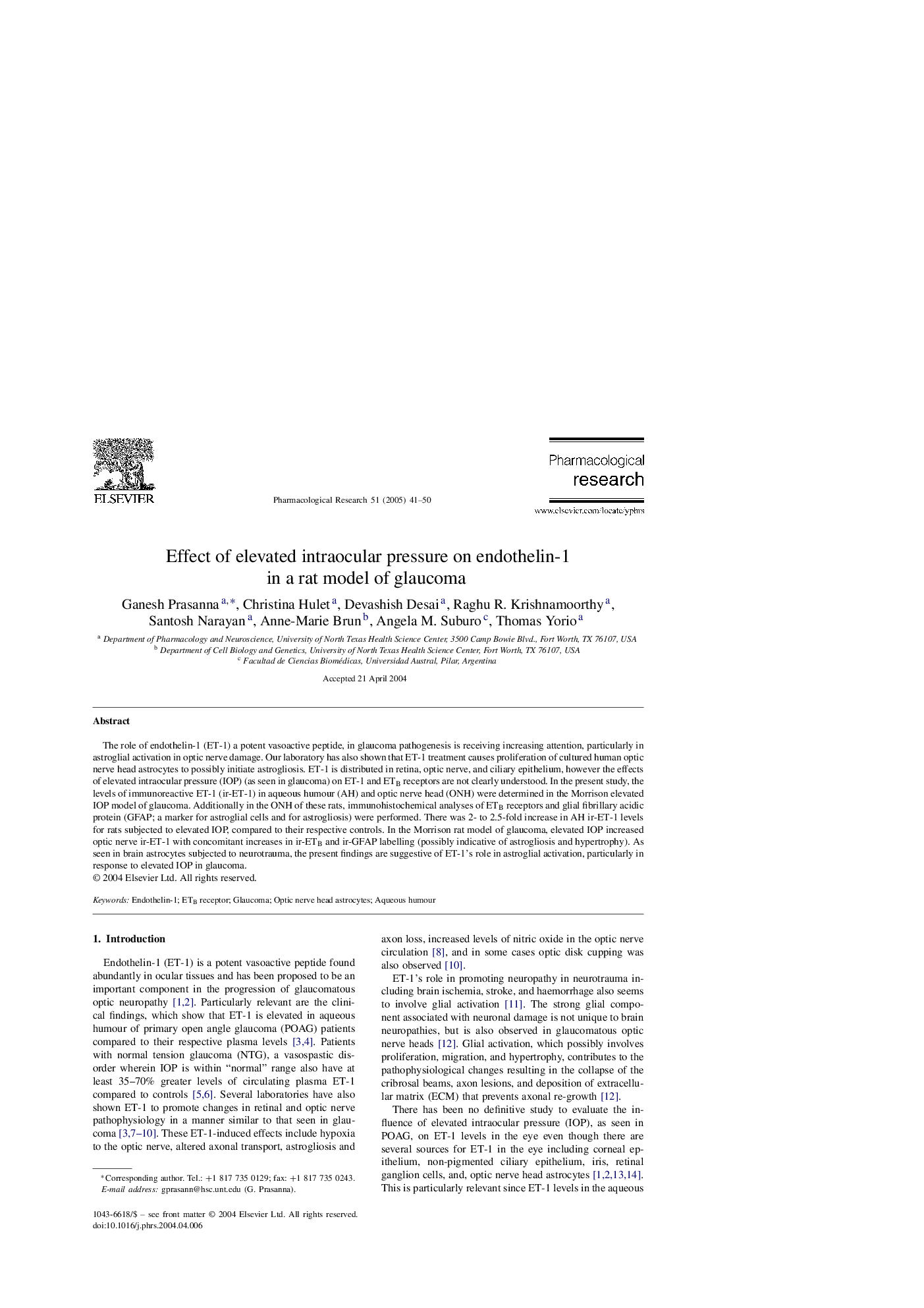| Article ID | Journal | Published Year | Pages | File Type |
|---|---|---|---|---|
| 9015396 | Pharmacological Research | 2005 | 10 Pages |
Abstract
The role of endothelin-1 (ET-1) a potent vasoactive peptide, in glaucoma pathogenesis is receiving increasing attention, particularly in astroglial activation in optic nerve damage. Our laboratory has also shown that ET-1 treatment causes proliferation of cultured human optic nerve head astrocytes to possibly initiate astrogliosis. ET-1 is distributed in retina, optic nerve, and ciliary epithelium, however the effects of elevated intraocular pressure (IOP) (as seen in glaucoma) on ET-1 and ETB receptors are not clearly understood. In the present study, the levels of immunoreactive ET-1 (ir-ET-1) in aqueous humour (AH) and optic nerve head (ONH) were determined in the Morrison elevated IOP model of glaucoma. Additionally in the ONH of these rats, immunohistochemical analyses of ETB receptors and glial fibrillary acidic protein (GFAP; a marker for astroglial cells and for astrogliosis) were performed. There was 2- to 2.5-fold increase in AH ir-ET-1 levels for rats subjected to elevated IOP, compared to their respective controls. In the Morrison rat model of glaucoma, elevated IOP increased optic nerve ir-ET-1 with concomitant increases in ir-ETB and ir-GFAP labelling (possibly indicative of astrogliosis and hypertrophy). As seen in brain astrocytes subjected to neurotrauma, the present findings are suggestive of ET-1's role in astroglial activation, particularly in response to elevated IOP in glaucoma.
Related Topics
Health Sciences
Pharmacology, Toxicology and Pharmaceutical Science
Pharmacology
Authors
Ganesh Prasanna, Christina Hulet, Devashish Desai, Raghu R. Krishnamoorthy, Santosh Narayan, Anne-Marie Brun, Angela M. Suburo, Thomas Yorio,
